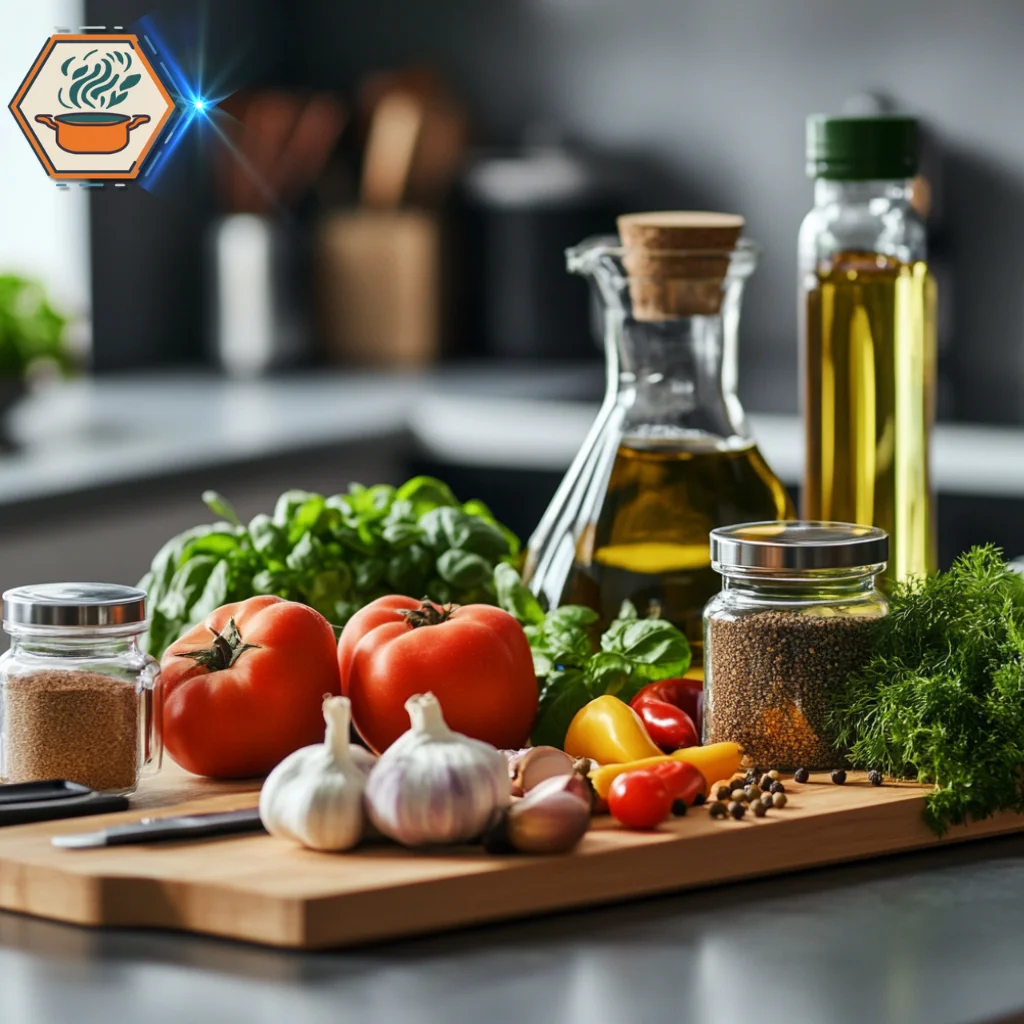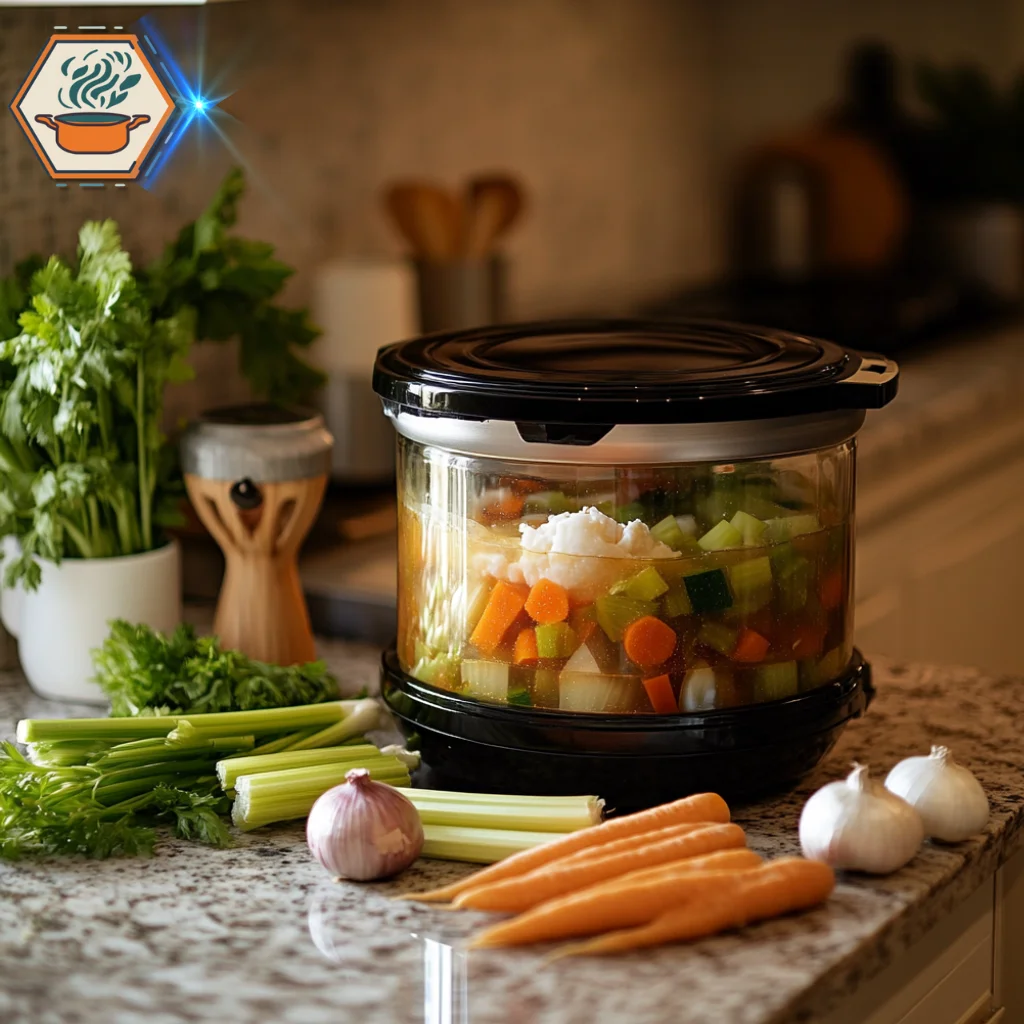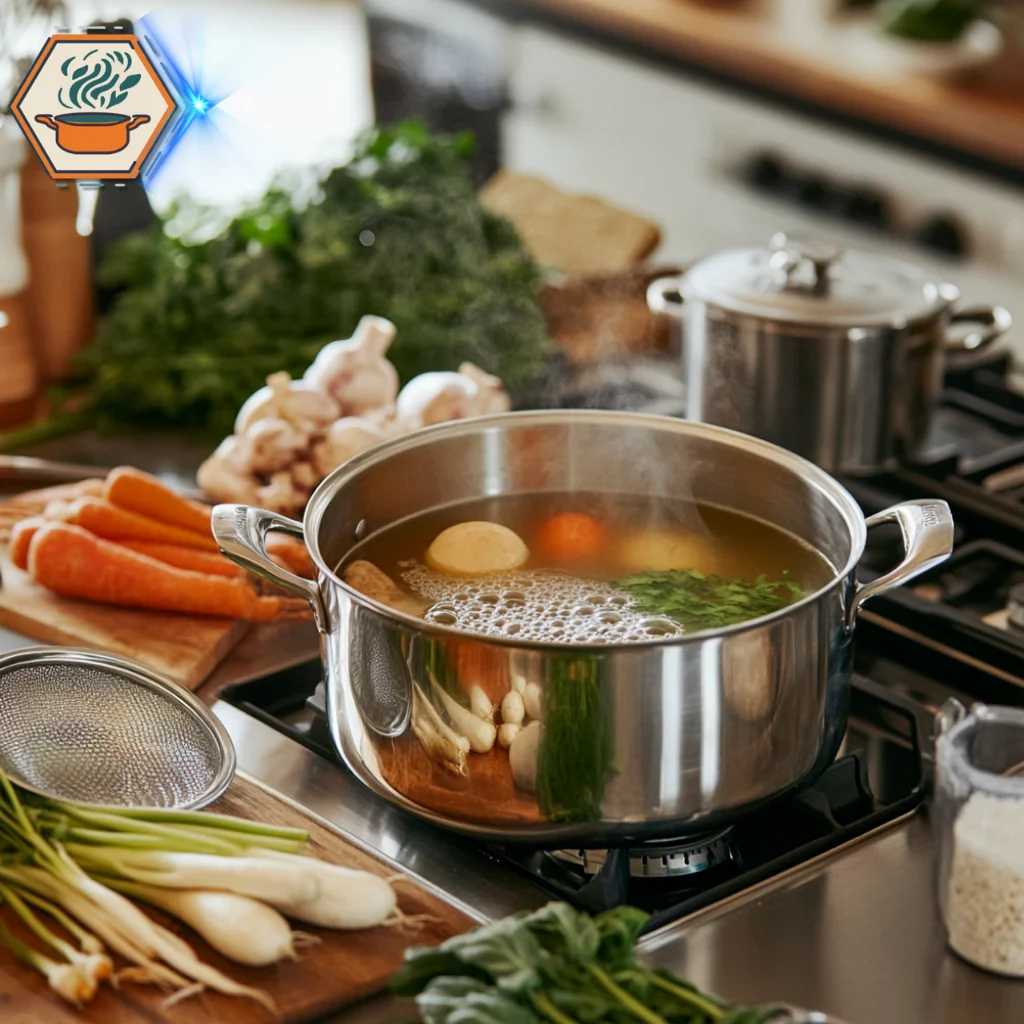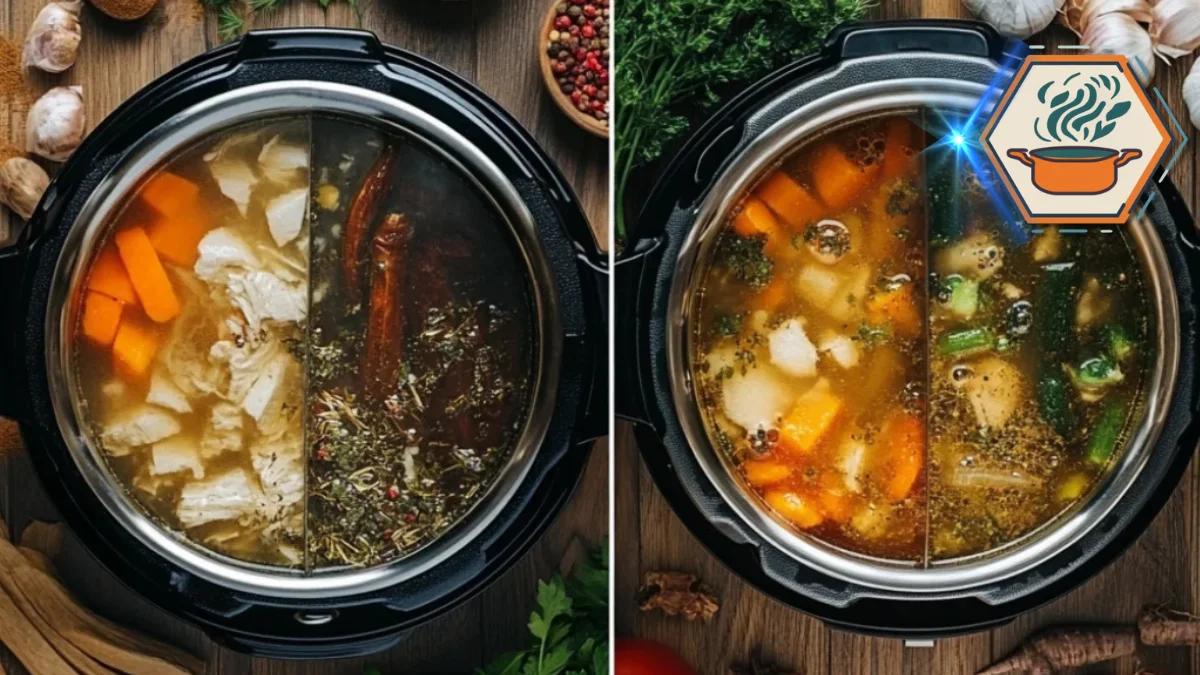Time to read: 11 minutes
Table of Contents
Understanding Bone Broth Preparation
What Is Bone Broth?
Bone broth is a nourishing liquid prepared by slowly simmering animal bones along with connective tissues.This traditional preparation extracts valuable minerals, collagen, and amino acids, resulting in a flavorful and healthful base for soups, stews, and sauces.
Definition and Origins
Historically, bone broth has been a staple in various cultures, utilized for both its culinary versatility and medicinal properties. By boiling bones from beef, chicken, fish, or other animals, the resulting liquid captures the essence and nutrients of the bones, creating a nourishing elixir.
Nutritional Benefits of Bone Broth
Bone broth is celebrated for its array of health benefits, attributed to its rich composition of nutrients:
- Collagen and gelatin are proteins that promote joint health, enhance skin elasticity, and support gut health.Consuming collagen may improve skin elasticity and reduce wrinkles.
- Amino Acids: Bone broth contains essential amino acids like glycine and proline, which play roles in muscle repair, immune function, and anti-inflammatory responses.
- Minerals: It provides minerals such as calcium, magnesium, and phosphorus, essential for bone health and metabolic functions.
- Electrolytes: Sodium and potassium in bone broth help maintain hydration and support nerve function.
Key Ingredients in a Traditional Bone Broth Preparation Recipe
To a robust Bone Broth Preparation, gather the following components:
- Animal Bones: Use bones rich in marrow and connective tissues, such as beef knuckles, chicken carcasses, or fish heads. Roasting the bones beforehand can enhance flavor.
- Acidic Medium: Adding a small amount of apple cider vinegar helps leach minerals from the bones into the broth.
- Vegetables: Incorporate aromatic vegetables like onions, carrots, and celery to deepen the flavor profile.
- Herbs and Spices: Bay leaves, peppercorns, and garlic are common additions that contribute to the broth’s complexity.
- Water: Ensure all ingredients are fully submerged to facilitate even extraction of nutrients.
The Science Behind Bone Broth Preparation Methods
The method chosen to Bone Broth Preparation significantly influences its flavor, nutrient density, and cooking duration. Two popular appliances for this purpose are the slow cooker and the pressure cooker.
How Slow Cooking Works
A slow cooker maintains a consistent, low temperature over an extended period, typically ranging from 12 to 48 hours. This prolonged cooking time allows for the gradual breakdown of collagen into gelatin and the release of minerals into the broth, resulting in a rich and flavorful liquid.
How Pressure Cooking Works
A pressure cooker operates by increasing the internal pressure, which raises the boiling point of water and accelerates the cooking process. Bone Broth Preparation can start in a pressure cooker within 2 to 3 hours, efficiently extracting nutrients and gelatin from the bones.
Comparing the Impact of Cooking Methods on Nutrients
While both methods effectively extract nutrients, the choice between them may affect the final product:
- Nutrient Retention: Pressure cooking preserves heat-sensitive nutrients due to shorter cooking times, whereas slow cooking may lead to some nutrient degradation over prolonged periods.
- Gelatin Extraction: Slow cooking may yield a higher gelatin content, resulting in a more viscous broth upon cooling.
- Flavor Development: Extended slow cooking can enhance flavor complexity, while pressure cooking produces a cleaner taste profile.
Factors to Consider Before Choosing a Cooking Method

Selecting the appropriate method for making bone broth depends on various factors, including time availability, desired flavor and texture, and equipment preferences.
Cooking Time and Convenience
- Slow Cooker: Ideal for individuals who prefer a hands-off approach and can accommodate longer cooking times without supervision. Set it and forget it, allowing the broth to develop depth over time.
- Pressure Cooker: Suitable for those seeking a quicker preparation without compromising nutrient extraction. The reduced cooking time makes it convenient for busy schedules.
Flavor and Texture Outcomes
- Slow Cooker: Tends to produce a richer, more robust flavor with a thicker consistency due to higher gelatin content.
- Pressure Cooker: Yields a lighter broth with a cleaner taste, which may be preferable for certain culinary applications.
Equipment Availability and Maintenance
- Slow Cooker: Requires minimal maintenance and is widely available in various sizes. It’s energy-efficient for long cooking durations.
- Pressure Cooker: Modern electric pressure cookers (e.g., Instant Pot) offer versatility with multiple cooking functions but may require a learning curve for safe operation.
Slow Cooker vs. Pressure Cooker: Which Is Better for Making Bone Broth?
Bone broth is a beloved staple in kitchens worldwide, thanks to its nutritional benefits and rich flavor. However, a common question arises: Should you make bone broth in a slow cooker or a pressure cooker?
Each approach offers distinct benefits and potential trade-offs. In this article, we’ll compare these two popular cooking methods to help you decide which one suits your needs best.
Pros and Cons of Making Bone Broth Preparation in a Slow Cooke

Advantages of the Slow Cooke
- Gradual Cooking for Enhanced Flavor
One of the primary benefits of using a slow cooker is its ability to extract flavors gradually. The long, steady heat allows the bones, vegetables, and herbs to meld together, creating a rich and full-bodied broth. - Convenience and Ease of Use
Slow cookers are incredibly user-friendly. Just combine your ingredients, set the timer, and allow it to cook. This hands-off approach makes it perfect for busy individuals or those who prefer to “set it and forget it.” - Consistent Heat Distribution
Slow cookers maintain a consistent temperature, reducing the risk of burning or overcooking the broth.
Drawbacks of the Slow Cooker
- Long Cooking Times
Slow cookers typically require 12-24 hours to achieve the desired level of nutrient extraction. This extended cooking time may not be practical for everyone. - Energy Consumption
Running a slow cooker for an extended period can increase energy costs, especially when compared to the efficiency of a pressure cooker. - Limited Heat Intensity
While the low-and-slow method is ideal for flavor, it may not break down bones as efficiently as a pressure cooker, potentially leaving behind valuable nutrients.
Pros and Cons of Making Bone Broth Preparation in a Pressure Cooker
Advantages of the Pressure Cooker
- Speed and Efficiency
A pressure cooker can produce a nutrient-rich bone broth in just 2-3 hours. For those with a busy lifestyle, this time-saving feature is invaluable. - Effective Nutrient Extraction
The high pressure and temperature inside the cooker help break down bones and connective tissues quickly, releasing collagen, gelatin, and minerals into the broth. - Energy-Efficient Cooking
Because of its shorter cooking time, a pressure cooker consumes significantly less energy than a slow cooker.
Drawbacks of the Pressure Cooker
- Risk of Overcooking
Overcooking is a potential downside with pressure cookers. Excessive cooking can alter the flavor, making it taste bitter or overly concentrated. - Learning Curve
Pressure cookers, especially stovetop models, can be intimidating for beginners. Improper use may lead to safety concerns, such as releasing pressure incorrectly. - Flavor Development
While fast and effective, the pressure cooker doesn’t always allow for the same depth of flavor as the slow cooker due to the reduced cooking time.
Flavor and Texture Comparison
Slow Cooker: Rich and Layered Flavor
The gradual cooking process of a slow cooker allows flavors to develop fully. The result is often a broth with a rich, savory taste and a slightly thicker texture due to the slow breakdown of collagen and gelatin.
Pressure Cooker: Bold but Subtle Differences
Pressure cookers produce a clean and bold flavor in a fraction of the time. However, some users note that the flavor lacks the complexity achieved through slower cooking methods. Additionally, the texture may be slightly thinner compared to slow-cooked broth.
Nutritional Outcomes of Each Cooking Method
Nutrient Retention in the Slow Cooker
Slow cooking preserves nutrients by using low, consistent heat. However, the extended cooking time may cause some water-soluble vitamins to degrade. Despite this, the extraction of minerals, gelatin, and collagen is highly effective.
Nutrient Retention in the Pressure Cooker
The high heat and pressure of a pressure cooker maximize nutrient extraction in a shorter time. This method is particularly effective at breaking down cartilage and connective tissues, resulting in a broth that is rich in gelatin and amino acids like glycine.
Which Method Is Right for You?
Choosing between a slow cooker and a pressure cooker ultimately depends on your priorities:
- If flavor and tradition are your priorities: The slow cooker’s gradual process may be ideal.
- If time and efficiency matter most: The pressure cooker is the clear winner.
- For a balanced approach: You might consider using both methods, starting with the pressure cooker and finishing in the slow cooker to deepen the flavor.
For more tips on perfecting your bone broth recipe, check out our guide to enhancing homemade broths.
Practical Tips for Perfect Bone Broth Preparation

Making bone broth is both an art and a science. Whether you prefer a slow cooker or a pressure cooker, following best practices can elevate the quality, taste, and nutritional value of your broth. In this guide, we provide practical tips to perfect your bone broth and explore the tools and techniques you need for success.
Best Practices for Using a Slow Cooker
1. Choose the Right Settings
A slow cooker excels at steady, low-heat cooking. Here’s how to optimize your settings:
- Use the low setting for at least 12-24 hours to extract maximum nutrients.
- Avoid frequent lid-opening to maintain a consistent temperature and prevent extended cooking times.
2. Use High-Quality Ingredients
The quality of your bones and aromatics makes a significant difference. Opt for:
- Grass-fed beef bones or organic chicken bones for better flavor and nutrient density.
- Fresh vegetables, including carrots, celery, and onions, to enhance flavor.
- Apple cider vinegar is used to extract minerals from the bones.
3. Add Water Strategically
- Start with cold water to encourage better extraction of collagen and gelatin.
- Ensure that all ingredients are fully submerged but avoid overfilling the slow cooker.
4. Skim Frequently
During the first hour of cooking, foam may form on the surface. Skim this off to ensure a clear, clean broth.
Best Practices for Using a Pressure Cooker
1. Understand Your Cooker’s Settings
Modern pressure cookers like the Instant Pot simplify broth-making with pre-set programs. For best results:
- Use the “Soup” or “Broth” setting, which typically cooks at a consistent high pressure.
- Cook for 2-3 hours for optimal nutrient extraction without overcooking.
2. Prep Bones Correctly
- Roast bones beforehand to enhance flavor and remove impurities. Roast at 400°F for 20-30 minutes.
- Split large bones to expose the marrow for maximum collagen release.
3. Layer Ingredients Wisely
- Place bones at the bottom, followed by vegetables and herbs.
- Add water last, ensuring you don’t exceed the cooker’s maximum fill line.
4. Release Pressure Safely
- Allow natural pressure release for 10-15 minutes after cooking. This gradual cooling process improves the clarity of the broth.
- Strain the broth immediately to separate solids and avoid over-steeping ingredients.
Expert Tips to Enhance Your Bone Broth Preparation
1. Select the Best Bones
- Chicken Bones: Ideal for a lighter, more delicate flavor.
- Beef Bones: Perfect for a robust, hearty broth.
- Fish Bones: Great for a mineral-rich broth with a shorter cooking time.
2. Incorporate Aromatics for Depth
Add ingredients like:
- Garlic and ginger for an immunity boost.
- Fresh herbs like thyme, rosemary, or parsley for herbal notes.
- Bay leaves and whole peppercorns for subtle spice.
3. Strain for Clarity
For a smooth, professional-grade broth:
- Use a fine mesh strainer or cheesecloth to remove particles.
- Strain the broth twice for extra clarity.
4. Store Properly
- Store in airtight containers in the refrigerator for up to five days.
- Freeze in ice cube trays for convenient portioning and longer storage.
Common Mistakes to Avoid
1. Neglecting the Vinegar
Acidic mediums like apple cider vinegar are essential for mineral extraction. Skipping this step can result in a broth that’s less nutrient-dense.
2. Overfilling the Cooker
Overfilling can dilute your broth and hinder proper heat distribution, affecting the extraction process.
3. Rushing the Process
While pressure cookers are faster, avoid cutting cooking time too short. Proper collagen release requires adequate time and heat.
Conclusion: Perfecting Your Bone Broth Preparation
Whether you’re using a slow cooker or pressure cooker, mastering the nuances of bone broth-making is a rewarding experience. By selecting high-quality ingredients, following best practices, and avoiding common pitfalls, you’ll create a broth that’s rich in flavor and nutrients.
Looking to learn more? Explore our How many hours should you cook bone broth? for additional tips and tricks. For scientific insights into bone broth’s benefits, visit Harvard Health’s comprehensive overview.
Start experimenting today and enjoy the nourishing benefits of homemade bone broth in your favorite recipes!


2 thoughts on “Is it better to make bone broth in a slow cooker or pressure cooker?”